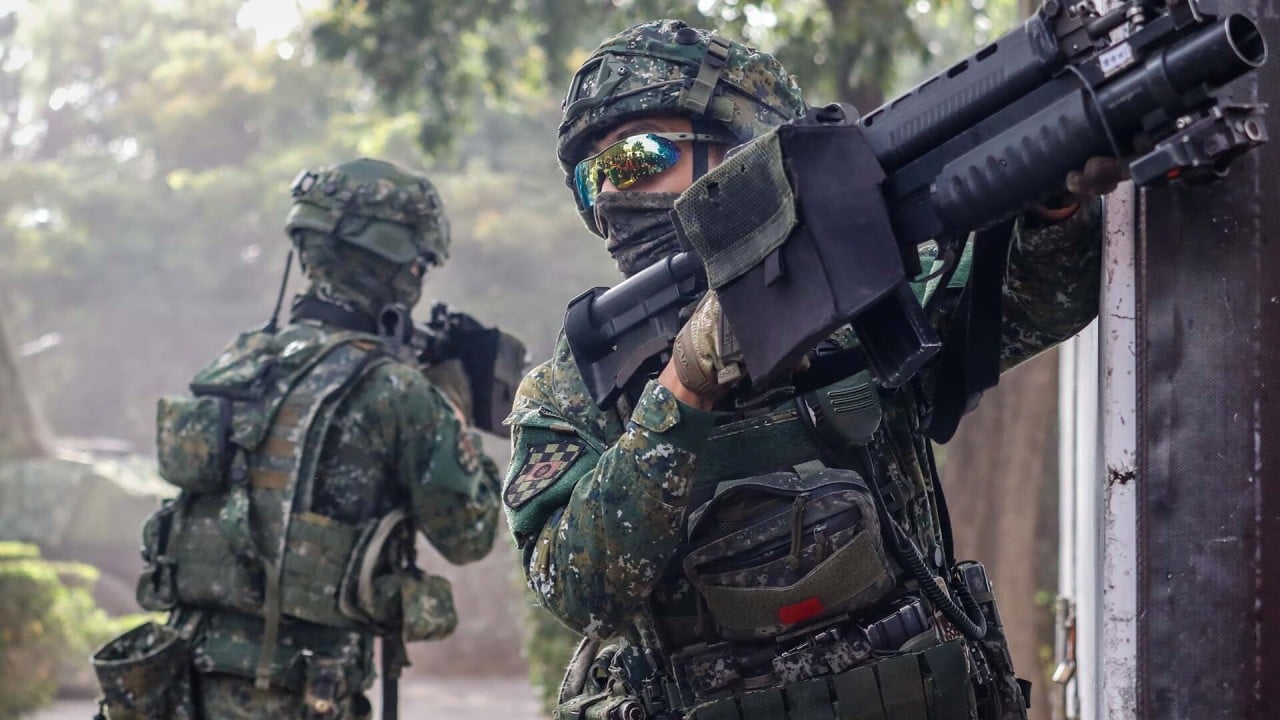
Was it Beijing testing Taiwan’s defences with unidentified Matsu island flyover?
- An unidentified aircraft recently flew over a Taipei-controlled island off the mainland’s southeastern Fujian province
- Intrusion could be part of the PLA’s ‘grey zone’ warfare tactics to test the Taiwanese military’s response, says former Taiwan air force general
Residents of Tungyin, a frontline islet under Taiwan’s Matsu islands cluster, said they spotted an unidentified aircraft flying overhead at 2.45pm on February 5, while video footage from the watchtower monitor showed an aircraft crossing the skies and flying out towards the east.
The military commanding centre of Tungyin confirmed that “a fixed-wing twin-propeller aircraft [had] briefly entered the airspace and soon left”.
It said air-defence troops stationed on the island “had closely monitored the process throughout”, but failed to give details on what type of aircraft it was, its take-off and landing points, or what kinds of action had been taken to deal with the intrusion.
However, those warplanes stayed within the southwest ADIZ and did not fly over mainland Taiwan or its adjacent islets, and the Taiwanese military responded by scrambling fighter jets for expulsion and monitoring, according to the island’s defence ministry.
Tungyin, just 16km (10 miles) from Fuzhou – the PLA’s Eastern Theatre Command base in the mainland’s southeastern Fujian province – is a Taiwanese military outpost. It hosts major missile and radar complexes, including the Tien Kung, or Sky Bow, and Hsiung Feng anti-aircraft missiles.
However, until Friday, the defence ministry in Taipei had yet to reveal any details about the previous week’s intrusion, even though the incident had sparked an outcry in Taiwan, with Taiwanese lawmakers saying it had exposed some weaknesses in its self-defence capabilities.
Some suggested the “unidentified aircraft” had been sent from the mainland, and that it could have been a civilian transport plane. Others claimed it was an “unmanned aerial vehicle” built by the PLA from a retrofitted retired J-6 fighter jet.
Regardless of whether it was an UAV or manned aircraft, the intrusion could be seen as part of the PLA’s “grey zone” warfare tactics to test the Taiwan military’s defensive response – if it were indeed from the mainland, a retired lieutenant general of the Taiwanese air force told China Times.
“The [unidentified] aircraft is not a stealth one that could be spotted by Taiwan’s radar system easily,” Chang Yan-ting, the air force’s deputy commanding general from 2018 to 2020, was quoted by the Taiwanese newspaper as saying.
“If [the Taiwanese] military didn’t take any proper actions, such as scrambling jets to expel [the aircraft], or firing warning shots, that means the mainland was successful in this test, and I expect they would come again.”
Lu Li-shih, a former instructor at Taiwan’s Naval Academy in Kaohsiung, said the need to enhance Taiwan’s self-defensive capabilities had dominated public discourse since October, “when the PLA increased its aircraft sorties into Taiwan’s ADIZ”.
“The recent intrusion showed the PLA wants to test whether the Taiwanese military dares to fire a warning shot.”
Lu said any dilemma over firing warning shots would have stemmed from the concession made by the then ruling Kuomintang, when it first announced its territorial sea base points in 1999, following an aggressive proclamation published by Beijing three years before.
“In 1996, Beijing included Tungyin as one of its 49 territorial island bases, and Taipei announced its territorial sea base points in 1999 to exclude the Quemoy and Matsu islands for the first time,” Lu explained.
“The announcement was picked up again by [then] president Ma Ying-jeou’s administration after one decade.”



